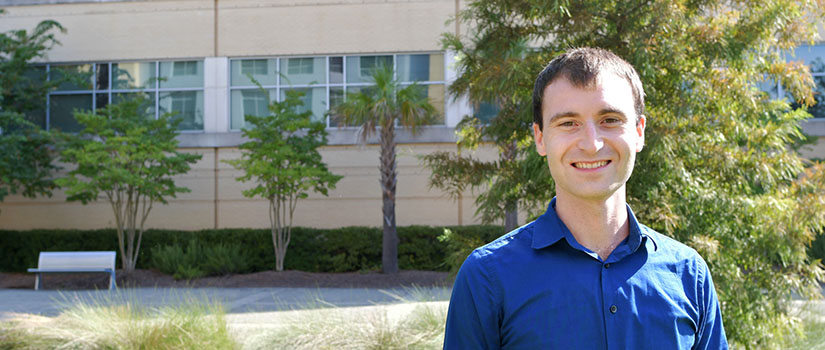The Soviet Union launched the Venera 7 probe to Venus in 1970, the first spacecraft to transmit data after landing on another planet. During its approximate one-hour transmission, it recorded a steady surface temperature of 475 degrees Celsius and nearly five mile-per-hour winds.
But despite its inhospitable conditions, which also includes a high-pressure troposphere (90 times higher than Earth) and an acidic atmosphere, Mechanical Engineering Professor Andrew Gross recently began research to develop a material that could be used to construct a vacuum airship as an aerial platform for long duration missions to Venus.
“Developing a vehicle for Venus is a big challenge since nobody has sent any long-lived device to its surface. They have overheated after a couple hours due to the planet’s extreme temperature,” Gross says. “We want to see if we can address some of these challenges by having a vehicle built around protecting scientific instruments from the harsh environment in a way that also solves the mobility issues.”
Gross is PI on the project, “An Aerial Platform to Navigate the Troposphere of Venus Enabled by New Cellular Materials,” a one-year research grant from NASA’s Established Program to Stimulate Competitive Research (EPSCoR), which began Sept. 1. Sending a typical balloon to Venus with helium or another lifting gas would circulate a significant amount of heat throughout the balloon. This would be harmful to onboard instruments, which would need to be kept near room temperature. To combat the heat conduction, Gross’s plan is to replace the lifting gas with a lightweight material that is made from a sparse network of ceramic beams. Sucking all the gas out of the balloon would allow it to float on Venus, but the new material must withstand the troposphere’s crushing pressure.
“We’ll use an architected material, which means that the structure of the material is engineered, and its geometry has immense impact on its properties,” Gross says. “This [vacuum airship] was a good application for our architected material, because if we can optimize it for Venus, then we will learn about the fundamentals of preventing buckling, which is the main mode of failure. We can use these lessons for any other application where a low-density material is required.”
Gross plans to develop an architected material made from alumina, which is known for its superior hardness, strength and resistance to harsh environments. He will also encapsulate it in a titanium foil for airtightness. Alumina and titanium are compatible with Venus’s extreme temperature and acidity.
The manufacturing process will begin once the design for the architected material is tailored for the vacuum airship. Gross will start with a design that was first proposed by Lord Kelvin in the 19th century. If he is successful, it would be the first demonstration of a vacuum airship, a device first proposed by Leonardo Di Vinci in the 16th century. Instead of using light gases such as a typical balloon, a vacuum airship must be made lighter than air by removing all the gas in the balloon. But this puts enormous stress on the vessel. The strength of materials decreases rapidly at low densities, but ideal gases have a steady relationship between density and pressure. Thus, materials for a vacuum airship favor Venus’s dense atmosphere.
“In many ways, flight on Venus is easier than most planets – the pressure, heat and acidity are the main challenges there. With our material, once buoyancy is achieved, then the material automatically doubles as a shield to protect instruments from the extreme pressure and temperature,” Gross says.
Previous attempts to construct a vacuum airship for flight have failed. Aside from Earth’s less favorable conditions than Venus, previous attempts have used a reserve balloon. All gas is removed from the balloon and replaced with a stiff shell with the intention to float. But it is only a balloon with a rigid skin.
“Our idea is completely different. Instead of trying to make the balloon stronger, we’ll replace the gas with a sparse solid,” Gross says. “With internal support from the alumina network we’re developing, it still allows us to have the vacuum inside. We have to guard against buckling of struts, within this material, but we can control that by changing their geometry.”
Earlier this year, NASA announced two funded missions to Venus that are slated for later this decade. Interest in studying Venus has increased because of the belief that greenhouse gases turned the plant into a wasteland of heat, pressure and acidity. Gross hopes his research can help contribute to the development of mobile science platforms to further study the planet.
“I think in one year our work will go from being feasible on paper to making considerable progress towards a demonstration,” Gross says. “Our goal is for the results to lead to convincing evidence that this is a reasonable and viable approach to exploring the surface of Venus. Currently, there is no attention on this idea, so hopefully we can make that first spark.”
